
One of the things I love about cooking is working with new ingredients. A few years ago I found THE most exciting ingredient and loved it so much that it is now a staple for several new dishes. This ingredient is the giant Royal Corona Bean. It’s the biggest bean I had ever cooked; therefore, the first time I cooked it I was a little apprehensive. However, once I tasted the cooked bean, that apprehension was proven to be totally unnecessary.
Royal corona beans are the creamiest, meatiest, and most tender beans I’ve ever eaten. The texture and flavor is like no other bean. They have the texture of creamy potatoes, and the flavor is mild, sweet and savory. They are a perfect meat substitution for carnivores. Not only does eating a few beans in one bite have the melt in your mouth quality of biting into a small piece of a very tender tenderloin, they also have the protein without the fat. In 1 cup of cooked coronas you get about 70 grams of protein, 0 fat, 20 grams of dietary fiber, and 320 carbs. They also have vitamin A and C, calcium, iron and other vitamins.
A quick summary of how to cook them
As with all dried beans, I start with a 4 – 5 hour brine. This helps to shorten the cooking time as well as add some saltiness to the bean. Even though the coronas get wrinkly during the brine, the skin doesn’t break or slide off. It stays intact. In fact, the skin stays intact during the whole cooking process (as seen in the recipe pictures below). For the perfect flavor and texture, it takes about 1.25 to 1.5 hours of cooking time. However, as with all beans, the older the bean, the longer the cooking time. Beans that have set on the shelf for many months/years might take as long as 3 hours. After about an hour of a slow simmer, I check them. If they aren’t near being done, they will be nutty in texture so I give them at least another 30 minutes before checking again. If close to being done, they have little bit of grittiness. At this point I check every 15 minutes until they have a creamy, melt in your mouth texture.
I do recommend a slow cook for these beans rather than a pressured cook. They can go from being nearly done to overcooked quite fast.
How to use them
So what can you do with them once they are cooked? A LOT! Use in place of pasta in Italian dishes and potatoes in soups, toss with olive oil, sea salt, lemon and herbs, or with chile and cheese, add to chili, or, one of my favorites, pan fry the beans and add to sauteed mushrooms and greens.
Keep an eye out for future posts of recipes using coronas. In the meantime, I’ve listed a couple of recipes for you at the end of this post.
How to Cook Royal Corona Beans

Since it’s just the two of us, I usually cook up a pound of dried coronas using the recipe below. Then I divide the cooked beans into two, 3 cup portions and use the two portions for two different dishes. Sometimes I’ll freeze one of the portions for later. These beans freeze very well. Just be sure to cover them with bean broth to prevent freezer burn. Any leftover broth can be frozen and used for soups, stews and sauces. You could also drink it. The broth is as delicious as the beans.

A giant white bean with a soft, thin skin and creamy filling. They literally melt in your mouth. Here's how I cook them to achieve the best flavor and texture.
*See Kitchen Notes for more information, related links and substitutions.
- 1 pound dried corona beans
- 1 Tbsp coarse Kosher salt
- Water
- brined beans, drained and rinsed
- 6 cups water*
- 1 Tbsp. vegetable bouillon base* (Better than Bouillon)
- 3 large bay leaves
- 1 tsp. dried Italian Seasoning Blend*
- Dissolve 1 Tbsp. salt in enough water to cover the beans.
- Add the dried beans and let soak for 4 to 5 hours.
- Drain and rinse.
To a bean pot add 6 cups water, the vegetable bouillon paste*, bay leaves, and dried herb mix. Heat over medium high heat. Stir to dissolve the bouillon.
Add the drained, rinsed, beans. Bring to a boil.
Reduce heat for a simmer. Cover and cook until beans are al dente, stirring occasionally and checking doneness after 1 hour. Check for bean tenderness after 1 hour, then every 15 minutes until beans are cooked. Beans are cooked when they are creamy, not gritty (uncooked) or mushy (overcooked). Fresh beans take about 1.25 to 1.5 hours to cook, but older beans could take as long as 2.5 to 3 hours.
Remove cover and let cool for about 30 minutes to an hour or use immediately in a dish.
*To use immediately, use a slotted spoon and remove 3 cups of beans for use. Let the rest of the beans and broth cool and save for another meal or freeze.
Cooking water – For vegetarian or vegan beans, use a vegetable broth. I use water and the vegetable base Better than Bouillon paste; however, you can use any broth you choose. Chicken and beef broth provide a different flavor to the finished bean which is just as delicious as using vegetable broth. How you plan to use the beans, dictates what seasoning (broth and herbs) to use. If you use homemade or ready-made broth, omit the vegetable bouillon paste.
Herbs – I normally use an Italian seasoning blend or a mix of herbs such as rosemary, thyme, oregano, a little marjoram, and sometimes sage. Such a blend is a nice seasoning for these beans and doesn’t limit the type of dish for which you can use the beans.
Using the cooked beans – One pound of dried beans yields 6 cups of cooked beans. Therefore, I always divide the cooked beans into 3 cup servings for 2 different dishes. Variety is the spice of life after all. 🙂 If I don’t have a second dish planned right away, I’ll freeze one serving. These beans freeze well, but be sure to cover them with the bean broth to reduce freezer burn. To thaw, set in the refrigerator overnight or on the countertop for about 4 hours.
The broth – I’m a bean broth fanatic so I never throw out bean broth. If you have extra, just freeze it and use it in soups, stews or sauces. Or, like me, heat it up and drink it. The broth is as good as the cooked beans IMO.

My standard source for royal corona beans is Rancho Gordo. Because these beans have become so popular due to their deliciousness, they sell out pretty quickly. However, if they are out of stock, you can request a notification when they are restocked, which is what I do. Once you get the notification, you need to buy soon, because these beans fly off the shelf. While you wait, you can always enjoy Rancho Gordo’s cranberry beans, eye of the goat, scarlet runners, yellow Indian woman, or Mayocobas – some of my favorites.
NOTE: The Rancho Gordo comments are non-solicited. I just love their beans and they have some beans that I can’t fine locally.
Here are a few recipes for using Corona Beans:
Pan-Fried Corona Beans with Greens and Mushrooms
Lemony Corona Beans with Olive Oil and Garlic @ Feasting at Home
Greek-style Giant White Bean Stew with Feta and Chinese Celery @ With a Glass
Cororna Beans with Tomatoes, Bacon and Sausage @ Proud Italian Cook (This is a slow cooker recipe)
Here are more How to Cook Dried Bean recipes using different beans and methods.

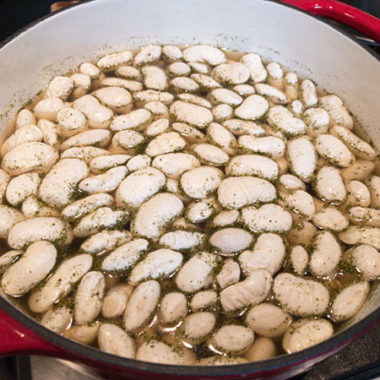
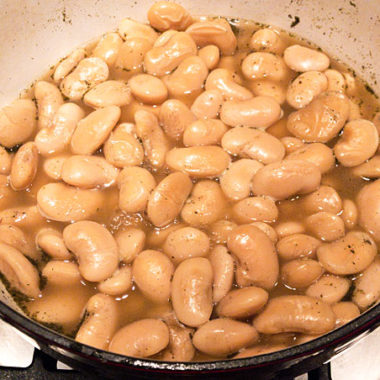
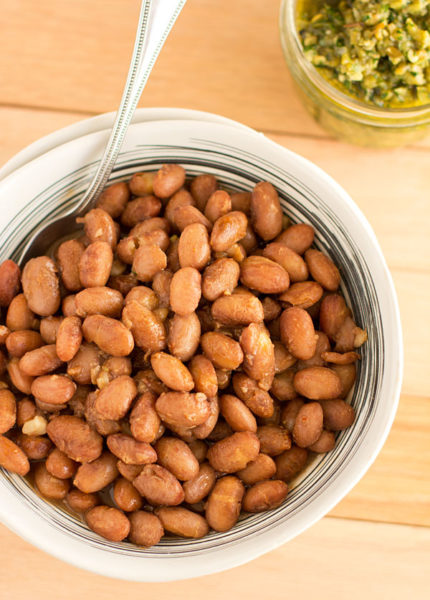
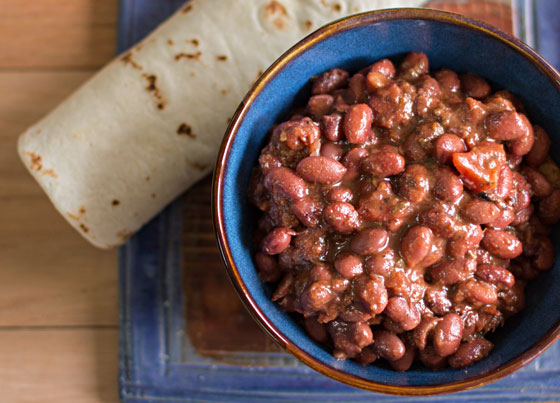
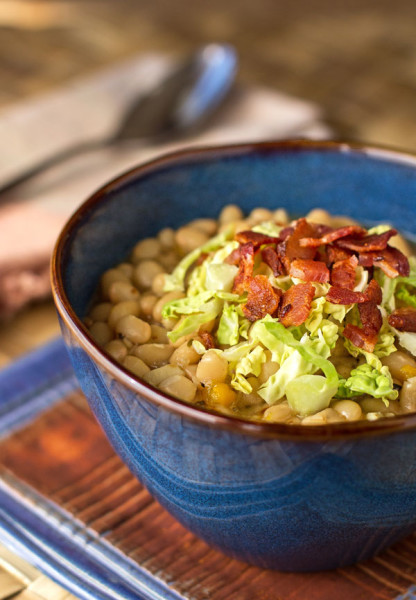
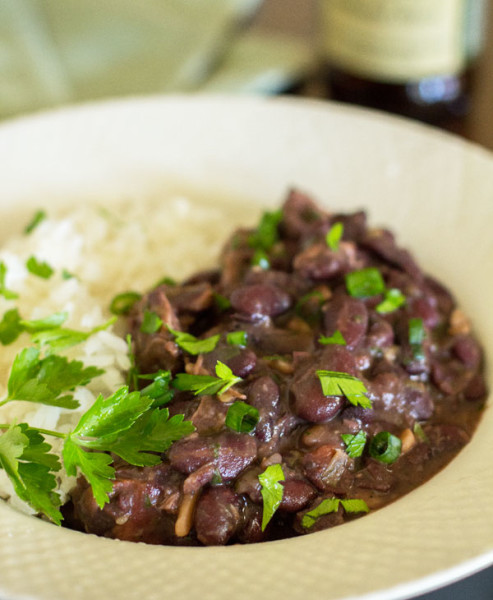
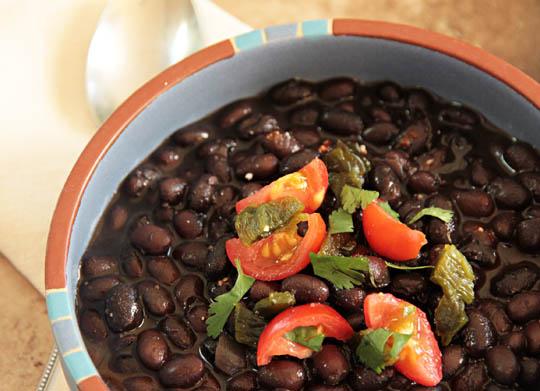
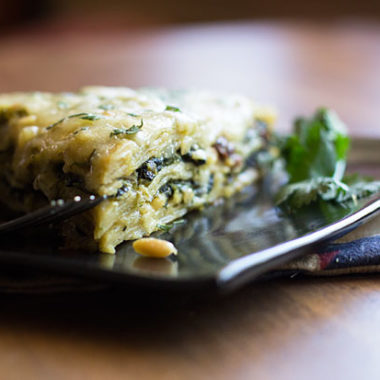
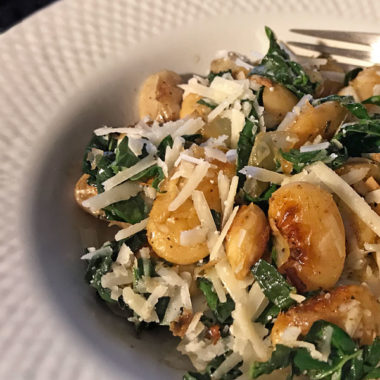

Pingback: does freezing coffee beans keep them fresh? – Coffee Tea Room
We love beans of all kinds and I think I would enjoy it as a salad but I am also taken in by the idea of having it pan fried with mushrooms and greens…yum!
My favourite!!! I don’t remember if I told you, but my favourite beans are the giant white ones! I’m not sure if it’s exactly the same variety, but I love them so much, whenever I find them, I buy in bulk just in case (they are not very popular here, only one shop sells them and not always).
I totally agree they might be a substitute for meat! I love their texture and the taste too… these are the only beans I could eat without any seasoning, cooked, as a snack! I prepare two dishes mainly: Greek-style stew (in Greece they prepare it with a variety called “gigantes”, I think) and Polish stew with sausage (in Poland they are very very popular!), but now reading your post I think I should maybe extend my recipe repertoire!
Thank you for all the tips! The bean broth use advice is so clever! I would never think about it….
PS My favourite herbs to go with these are either lots of marjoram or also lots of origan.
Sorry, I meant “oregano”…. I keep on mixing up French and English name with this one.
Thanks so much Sissi. These beans seem to be hard to find everywhere. I pretty much stay on a waiting list and them order a couple of pounds with each order. You are so right – there are an endless number of flavors that these beans work with. I just check out a couple of recipes on your site and added the Greek-style stew recipe to this post. that recipe and the buttery bean stew look delicious. Oh bean broth – I love the broth as much as the beans themself im many cases. YUM!
Dear MJ, I haven’t thanked you (I’ve just noticed to be frank… I should be more attentive!) for the link to my blog! It’s so kind of you!
By the way, in Poland huge beans (they are called something I’d translate as “Johnny beans”) are found everywhere (unless it’s changed since I left). Last time I asked my family to buy them for me, they had a choice of several different sizes at the market! Big, bigger, huge etc… I asked for the biggest possible of course!
Your description and the photos make me think these are larger version of Tuscan white beans, so perfect to use in so many versions ! My mother even used to make a cake using them. I am so looking forward to your new posts dear ! Thank you so much and I wish you have a nice day !
Davorka, Actually, the beans are quite different from Tuscan white bean. First of all, they are about 3 times the size if not 4 and I find them creamier than the Tuscan bean. However, they would probably work in some of the same recipes, just expect a much bigger bite from the bean. 🙂 Thank you so much for you nice comments. Hope you have a wonderful day as well.
Bill would love more beans on our menu! These sure would be fun to try–especially using your recipe! Have a great holiday weekend!!!
Thanks Liz! Bobby is also happy with a bowl of beans. 🙂
Wow! These are some gorgeous beans! Your photography is just beautiful but your helpful hints for cooking them are even better. Slow cooked is really the way to go as totally understand what you mean as one minute perfect and the next minute bean puree. Stay well and take care
Thanks Bobbi. It’s hard to take an ugly shot of such gorgeous beans. 🙂 Thanks!
This looks like a bean I want to get to know! That plump buttery body is just gorgeous – like creamy potatoes you say? I’m all starry eyed over here… love making new discoveries too, keeps things interesting. Thank you for the introduction MJ (meanwhile, can’t get over the size; they really are giant:)
Thanks Kelly. Yes, like creamy potatoes. In fact, I’m tempted to make some mashed beans like I would potatoes, but there are so many other create ways to use them.
Ohhh first time I had seen a bean like that, so huge.
They are HUGE! I though they were big as a dried bean, but, once cooked, they were even twice as big.
From reading the comments, I’m not the only one who hasn’t heard of Giant Royal Corona beans. As always you have enriched my knowledge of all things beans! Your description makes them sound so good and something new to try!
thanks Jan. I didn’t discover them until a few years back, so it’s not surprising that so many people haven’t ever heard of them. Plus, they aren’t a common bean in stores. So happy to turn you on to something new.
This was very informative. A friend has told me how delicious these beans are and I have been trying to find them. Rancho Godo has been out of stock for a while but I’ll keep trying.
Thanks Pat. You might be able to find them on Amazon, just make sure they are Coronas and not just gigantic beans.
Hi MJ. Thanks so much for this article. I love experimenting with new products. Did you find these at a store or did you order them online?
Thanks Lea Ann. New ingredients as such much fun! I get coronas from Rancho Gordo. As I mentioned in the post, they do run out of stock quickly, but you can ask for an email notification once they restock. Good luck and enjoy!
these look fantastic MJ! i do love a good bean. so hearty, so warming. I don’t know if we have this sort here in australia but you never know!
cheers
S x
Thanks Sherry. I thought you could find anything, anywhere today? 🙂 Of course, the shipping could be prohibitive.
New to me also but very attractive indeed ! Exited your post to talk to my favourite Mr Google. We in Australia seem to be able to buy such from specialist grocery stores and I shall be returning at the end of the day to read some of the articles attached. They look very ‘meaty’ – I am by no means a vegetarian but would love to try some of the recipes . . . thanks heaps !!!
Aren’t they pretty? Thanks Eha. We’re not vegetarian either, but we do try to eat meatless at least 2-3 days a week. Hope you can find them and enjoy!
The first and only other time i came across these beans on a blog was at the beginning of the pandemic, and i thought it was a joke!!! Of course then I realized corona was the actual name… They look so meaty and good. I’ll jump over to Amazon and see if they sell them. Thanks for the reminder!
Ha Ha! I didn’t even think of the Mimi. Now that I think about it, I do remember how Corona beer had a very hard time at the beginning of the pandemic. At Amazon, be sure to get the “corona” bean. If it just says “gigantic”, it’s not the same bean. I’ve never had the gigantic beans, but I’ve read they are quite as creamy in texture as coronas. Good luck and enjoy!
What a wonderful post! I’m not familiar with these, and should be. I just gave Rancho Gordo my email so they can notify me when these are in stock again. 🙂 We often make a big pot of beans and freeze most of it in small containers. And I agree that the broth may be better than the beans!
Thanks John. It might take awhile for RG to restock, but it’s worth the wait. I think you’ll love these.
This is very first time that I have seen those giant beans! And what a name!! I need to try them too. Thanks, MJ, for introducing a new ingredient to me.
You are most welcome Angie. I think you’ll love them and I know you would make some very creative dishes with them.